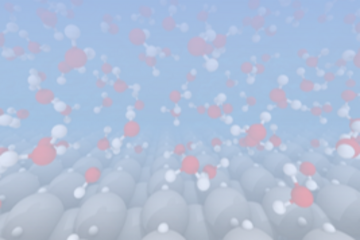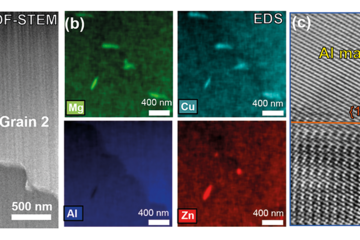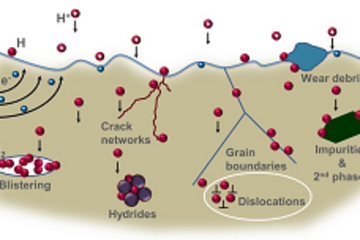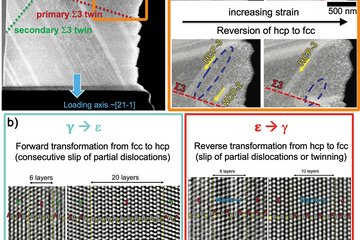All genres
1.
Journal Article
In-situ investigation of the interaction between hydrogen and stacking faults in a bulk austenitic steel. Acta Materialia 262, 119441 (2024)
2.
Journal Article
Effect of martensite twins on local scale cleavage crack propagation in a medium carbon armor grade steel. Materialia 30, 101800 (2023)
3.
Journal Article
Dislocation-enhanced electrical conductivity in rutile TiO2 accessed by room-temperature nanoindentation. Scripta Materialia 212, 114543 (2022)
4.
Journal Article
Hydrogen-based direct reduction of iron oxide at 700°C: Heterogeneity at pellet and microstructure scales. International Journal of Minerals, Metallurgy and Materials 29 (10), pp. 1901 - 1907 (2022)
5.
Journal Article
Low cycle fatigue response of differently aged AA6063 alloy: Statistical analysis and microstructural evolution. Materialia 20, 101219 (2021)
6.
Journal Article
The role of Ca, Al and Zn on room temperature ductility and grain boundary cohesion of magnesium. Journal of Magnesium and Alloys 9 (5), pp. 1521 - 1536 (2021)
7.
Journal Article
Microscale plastic anisotropy of basal and pyramidal I slip in pure magnesium tested in shear. Materialia 14, 100932 (2020)
8.
Journal Article
Prediction of Aging Kinetics and Yield Strength of 6063 Alloy. Journal of Materials Engineering and Performance 28 (5), pp. 2764 - 2778 (2019)
9.
Conference Paper
Multi-Objective Genetic Algorithm Based Optimization of Age Hardening for AA6063 Alloy. Content from this work may be used under the terms of theCreative Commons Attribution 3.0 licence. Any further distributionof this work must maintain attribution to the author(s) and the title of the work, journal citation and DOI.Published under licence by IOP Publishing Ltd3rd International Conference on Advances in Mechanical Engineering (ICAME 2020). IOP Conf. Series: Materials Science and Engineering 912, 052019, (2020)
10.
Talk
Deformation of CoCrFeNi alloy thin films under thermal fatigue. International Conference on Creep and Fracture of Engineering Materials and Structures CREEP 2024, Bangalore, India (2024)
11.
Talk
On the role of Ca, Zn and Al for ductilization of Mg alloys. 27th International Conference on Materials and Technology (27 ICM&T), Portoroz, Slovenia (2019)
12.
Talk
Understanding the ductilitization effect in Mg alloyed with Ca, Al, and Zn. Euromat 2019, Stockholm, Sweden (2019)
13.
Thesis - PhD
Investigations on the Mechanisms of Ductilization of Mg Alloys with Ca, Al and Zn. Dissertation, Ruhr-Universität Bochum (2020)








